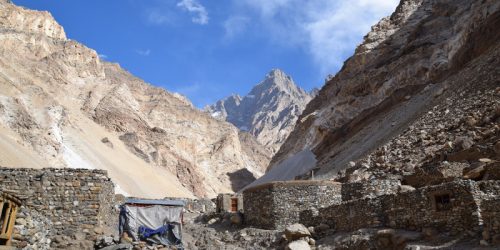For decades, Afghanistan’s untapped mineral wealth has been touted as the country’s trillion-dollar El Dorado. But while the Afghan government has never been able to monetize mountains of copper, iron ore, gold, and gemstones, the Taliban have—and are ramping up their mining operations as just-started peace talks aim to shape the future of a postwar Afghanistan.
In recent years, the Taliban have deliberately moved to secure control over regions of Afghanistan rich in mineral deposits, from lapis lazuli mines in northern Badakhshan to gold, lead, and zinc in Helmand and vast talc and marble deposits in southern Nangarhar. The Taliban, who already control most of the country’s mineral wealth, are banking on further developing the sector to make it the bedrock of the country’s postwar economy—or theirs, at least.
Mining is one of the leading factors in the economic development of Afghanistan,” said Yaqoob Shah, the director of the leasing department of the Taliban’s shadow ministry of mines. He said the group is currently earning about $400 million a year from mining—a figure confirmed by independent researchers and which dwarfs Afghan government income from mining.
“Once the peace talks have been carried out, it will be of great value to the country’s welfare and development,” Shah said.
In recent years, the Taliban have sought to maximize their earnings from the minerals under their control, said two senior Taliban figures, including a member of the insurgents’ negotiating team. The group issues mining licenses, arranges labor, and controls haulage from the mines and access to the roads, according to a new report from the U.N. Development Program (UNDP).
One insurgent, a powerful commander, talked up the changes the group has made to increase production and “achieve maximum profit” in the sector. He’s looking to the day when there are no more U.S. or international sanctions on Taliban economic activities.
“Now we are hopeful that peace talks will bear fruit, and after they are completed, we will be able to represent ourselves in the international market and work in our own way to provide employment and prosperity for the people of Afghanistan,” said the commander, who spoke on condition of anonymity.
The senior Taliban figure on the negotiating team, who also spoke on condition of anonymity, called mining “our most important sector” and said the group would seek to “boost this precious sector for the betterment and development of society.”
The Taliban’s push to maximize their economic leverage comes as long-delayed peace talks with the Afghan government began this month. For now, the talks are bogged down amid deep distrust on both sides—the Taliban do not recognize the legitimacy of the Kabul government—and dogged by a huge spike in violence.
The Taliban are widely believed to be responsible for a wave of attacks against Afghan government troops and installations this summer and have also apparently taken aim at departing U.S. forces. A spokesperson for the U.S.-NATO Resolute Support mission said in a statement that a spate of recent attacks, including rocket strikes on U.S. bases in Kandahar, contravened the agreement signed by the United States and the Taliban in February and “have the potential to put the peace process in jeopardy.”
Against that backdrop, with the Taliban hoping for some sort of power-sharing agreement in the future Afghanistan, the mineral riches offer a way for the militant group to almost match the government’s fiscal firepower.
The CIA estimates that the Afghan government took in just $2.2 billion in taxes and other revenue in 2017, for instance. The Taliban, for their part, earn upwards of $1.5 billion a year, according to the U.N. Security Council’s Analytical Support and Sanctions Monitoring Team, from “narcotics, illicit mineral and other resource extraction, taxation, extortion, the sale of commercial and government services and property, and donations from abroad.”
After opium and other narcotics, mining does seem to be a gold mine for the Taliban. The UNDP report estimates that extractive industries like mining are the Taliban’s “second-largest revenue stream after narcotics.”
“Minerals have become integral to conflict in Afghanistan—a magnet for conflict and a source of financing conflict. Ordinary Afghans are heavily affected by the contestation over mineral resources between the government, the Taliban, the IS-K [the local franchise of the Islamic State group], local insurgents and criminal networks,” the report reads.
Meanwhile, even as insurgents successfully tap Afghanistan’s riches, the UNDP estimates that the Afghan government took in only $42 million on average between 2012 and 2018 from the country’s extractive industries.








